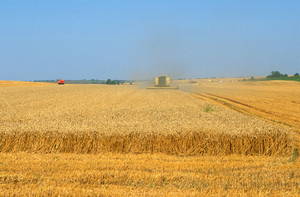Rome – Prices of major food commodities declined for the fourth year in a row in 2015, averaging 19.1 percent below their previous-year’s levels, as the dwindling global economy also triggered sharp price falls from metals to energy markets.
FAO’s Food Price Index averaged 164.1 points over 2015 and ended the year even lower, at 154.1 points during the month of December.
In December, the index declined a further 1.0 percent from its revised November value, as falling prices for meat, dairy and cereals more than offset gains by sugar and vegetable oils.
“Abundant supplies in the face of a timid world demand and an appreciating dollar are the main reason for the general weakness that dominated food prices in 2015,” said FAO senior economist Abdolreza Abbassian.
The FAO Food Price Index is a trade-weighted index tracking international market prices for five key food commodity groups: major cereals, vegetable oils, dairy, meat and sugar.
FAO’s Cereal Price Index declined 1.3 percent in December from its November value, due to intensifying export competition among maize producers and expectations of more wheat supplies entering world markets after Argentina removed export taxes. The sub-index, which includes rice, shed 15.4 percent on average during 2015 from the previous year.
The Dairy Price Index subsided 1.0 percent in December, and over the year was 28.5 percent below its average level in 2014, the sharpest decline of any food commodity.
The Meat Price Index dropped by 2.2 percent in December, prompted by surging pork output in Europe and reduced U.S. demand for imported beef. Over the full year, meat was on average 15.1 cheaper than in 2014.
The Vegetable Oil Price Index rose 2.1 percent in December, pushed up by uncertainties regarding Brazil’s soybean crop, but over 2015 as a whole was 19 percent below the previous year.
FAO’s Sugar Price Index rose 0.6 percent in December, but was on average 21 percent lower in 2015 than the previous year.
Prep: By Sh. Kh.

